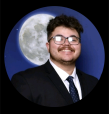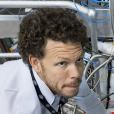
Showing 2181 - 2200 of 2483 results
Advanced food provenance and biosecurity in the Asia Pacific with FNCA project
ANSTO hosted an online training workshop for the FNCA (Forum for Nuclear Cooperation in Asia) project Combating Food Fraud using Nuclear Technology (CFF) in early December.

Jacob is currently an engineering & Physics intern working with the Australian centre for neutron Scattering (ACNS) here at Ansto. He is a third-year engineering Mechatronics student and final year physics student at QUT up in Brisbane.

Technical Information - XFM beamline
Technical Information on the X-ray fluorescence microscopy at the Australian Synchrotron.

Climate Change
Research to date and trace past climate change and interpret the indicators and drivers of the Earth's climate.
Progress on Bilby
New Electron Microscopy Facility opened
Energy innovators earn ANSTO Eureka Prize
A simplified way to produce new class of molecules with potential application for preparation of nanomaterials
Bilby study on lecithin
First paper from Bilby investigates the effects of inorganic ions on the self-assembly of lecithin

Food Materials Science
The Food Materials Science project applies nuclear-based techniques to investigate fundamental and industrial problems of national significance in food science, including food processing and product development. ingredient selection, food, and health

Nuclear remote online Laboratory (FarLabs)
Freely Accessible Remote Laboratories (FarLabs) have developed a nuclear remote online laboratory that schools can use to perform experiments with nuclear radiation.
The “Turntable” experiment illustrates the penetrating power of different forms of radiation. Students can choose to pair one of four sources (alpha, beta, gamma, and unknown) with one of five absorbers, including no absorber at all. A live data feed shows the count rate from a Geiger counter placed above the selected radioactive source.
The "Inverse Square Law" experiment demonstrates how the amount of radiation decreases with increasing distance from a radiation source. Students can access a live data feed showing the count rate from a Geiger counter placed at a selected distance away from a radiation source.
Teachers need to register using this link before using the remote laboratory. Please direct all enquiries to p.atsikidis@latrobe.edu.au.
We highly recommend testing this remote laboratory on your school’s equipment before planning a lesson with your class.
The FarLabs project is led by the Department of Physics at La Trobe University in collaboration with James Cook University, Curtin University, Quantum Victoria, V3 Alliance, and ANSTO.

Role at ANSTO

Deuteration Publications
Publications by ANSTO's National Deuteration Facility.

Role at ANSTO
Eureka finalist
Two ANSTO scientists were part of a research team led by the University of Wollongong, who are finalists for the 2019 NSW Environment, Energy and Science (DPIE) Eureka Prize for Environmental Research.
Insight into efficiency of organic solar cells
Understanding of micro-structure gained using X-ray scattering and spectroscopy.
Research explores how the magnetic moments of atoms in materials are arranged and interact
The unique magnetic properties and nontrivial quantum effects were observed and measured in an advanced material with potential application for quantum computing.

Radiation measurement
ANSTO maintains national capabilities in radionuclide metrology, the measurement and detection of ionising radiation, radioanalytical chemistry and nuclear forensics to support industry, government and scientific users.